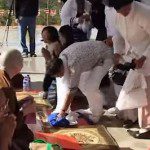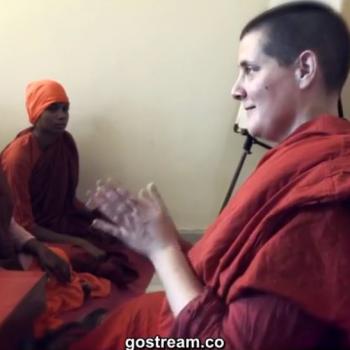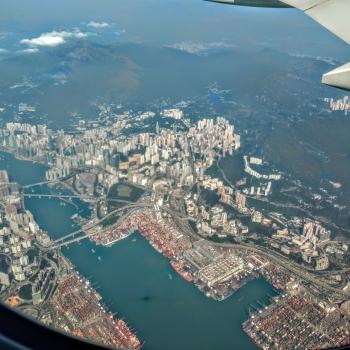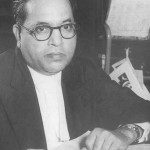September is a strange time in Bodhgaya. It’s stretched between the hot and muggy monsoon season of N.E. India and the gradual onset of the cool season. Over the three weeks we’ve been here, the temperatures have gone up and down (highs ranging from around 95F/35C to a cool 85F /29C) but the humidity has steadily dropped from the stultifying 85+% to a merciful 65% during the day.
It is still low season for tourists, so we get the city and her 38,000 or so inhabitants mostly to ourselves. Life is slow.
People sit, work, joke, gossip, and play in the streets all over town. But just about every week, almost out of nowhere, a new festival springs up: music is blasted, people walk around town banging drums, kids dance behind mobile discos – trucks with speakers and lights slowly cruising the main streets, and we’re all reminded that we are indeed in India.
We have also seen an estimated 500,000 Hindu pilgrims come through town over a 16 day period known as Pitrupaksha:
According to Hinduism, the souls of three preceding generations of one’s ancestor reside in Pitru–loka, a realm between heaven and earth. This realm is governed by Yama, the god of death, who takes the soul of a dying man from earth to Pitru–loka. When a person of the next generation dies, the first generation shifts to heaven and unites with God, so Shraddha offerings are not given. Thus, only the three generations in Pitru–loka are given Shraddha rites, in which Yama plays a significant role. According to the sacred Hindu epics (Itihasa), at the beginning of Pitru Paksha, the sun enters the zodiac sign of Libra (Thula). Coinciding with this moment, it is believed that the spirits leave Pitru–loka and reside in their descendants’ homes for a month until the sun enters the next zodiac—Scorpio (Vrichchhika)—and there is a full moon. Hindus are expected to propitiate the ancestors in the first half, during the dark fortnight.
And the last couple days have seen the city transforming, perhaps only temporarily, into something of a modern town, complete with freshly paved roads and lines on those roads (never mind that the lines are completely ignored by all traffic). There are signs apologizing for the inconvenience of sewage work in progress and a Bodhgaya Tourism Information center appearing out of nowhere, along with bus stops (though no known buses) and public urinals (which seem to be just walls built around places formerly used as open urinals). All of this is thanks to a government effort to sell Bodhgaya as a hot new tourism site to tour operators and officials from around the globe. I’ll see if I can sneak in tomorrow to get a peak at what is being promised (though the paved roads are already a major bonus and a fancy underground sewage system would definitely spruce things up around here – assuming it gets built).
Looking forward to October, I think we should see a few more Hindu festivals (Navaratri has just begun and will be in full swing over the next week or so), and perhaps an influx of Burmese pilgrims, followed by waves of Buddhists from various other countries – the biggest groups won’t come until late November though. For now, here’s a bit of what it looks like in Bodhgaya:







































